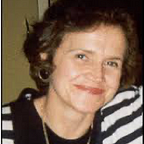Even Tailored Ladies Loved Tina Turner
Our styles were so different. But at heart, we were the same: fighters who go the distance.
Which is why, ever since the announcement of her death last week, Tina Turner has been much on my mind. Every day since, I have said to my husband, “I miss Tina so much.” I never met the rock icon, but I was on first-name basis with her.
Even though I have never been to a rock concert. And even though, outwardly, we would seem to have nothing in common. I identify as a tailored lady: black-and-white outfits, scarves, never a sequin on me, every hair in place (or that’s the intention). I never wear denim or leather, for the simple reason I look idiotic in it. Italians speak of “carrying” (portare) a style: Denim and leather is not a style I can carry, not without a guffaw.
But Tina could (and then some). She often added a lady-like touch, though: She wore pearls, a short string of pearls. On her, it all went together, magnificently.
But in the context of eternity — which is where, with her death, we have to go — style counts for little. It is character and substance and purpose and courage that count.
All the obituaries of Tina have, of course, cited her break with her abusive first husband Ike Turner, as her impetus to superstardom. Some, though, have focused overly long on those dismal 16 years, and on Tina’s behalf I wince. In the HBO documentary “Tina,” when an interviewer started off about Ike, she responded, with eye-roll, “Oh, we’re going to talk about that again?” No, Tina, we won’t, except to note you bailed with 36 cents and a Mobil credit card in your pocket, and from there you headed for your Renaissance.
I bailed from my first marriage at 8 months. My ex-husband was not abusive, just mean: In that short time it became clear I’d always be back-up, anathema to my unconquerable soul. Tina bailed in 1976, I did in ’72, but in retrospect I’ve likened my flight to freedom as many commenters to her obituaries have: as my “Tina moment.” When I bailed, I had a duplicate key to a girlfriend’s apartment, and from there I headed for my Renaissance.
Which is why I love the term “Renaissance”: It means rebirth.
Tina’s astonishing Renaissance is the proper focus of her life’s journey. It did not come readily nor easily; there were lean years singing in small venues. But, finally, the stars aligned and the elements came together: a new manager and a new arranger, in London, who “got” her. Her rendition of “What’s Love Got to Do With It?” blasted her onto the path to superstardom, in 1984. She was 44 — the age that American pop culture decrees life is over for women. (Maybe that’s why her major recognition came first in Europe?)
With Tina’s guttural rendition, one assumed “What’s Love Got to Do with It?” was aimed at Him-Who-Forevermore-Shall-Go-Unnamed, notably the reference to love as a “secondhand emotion.” I know I assumed it, at first.
But the more I heard the song, the more it was celebrated as anthemic, the more I thought Tina was signaling something more philosophical: Love is important, but it cannot be the end-all-and-be-all — or else if it goes wrong, it can sink a life. There is one’s life-work to attend to, to carry out. Freud said for a happy life, we need both love and work. Tina was focusing on the latter — for women, an important message, properly anthemic. “You go, girl,” I thought; I will, too. Happily, Tina ultimately found Mr. Much Better; I did, too. In 2013 she married German music producer Erwin Bach after 27 years together.
As Tina rose higher in the stratosphere, she carved an indelible image, one that conveyed solidity and, somehow despite the raucous setting, dignity. Who could miss it? Even to those of us far outside the venue, it registered: the no-nonsense command of the stage, the lion-like mane (of course it was a wig, which she carried so naturally). And the pure joy radiating from her — it was plain to see. It’s where we all want to get to: joy in the work, joy in the soul.
So when, in the mid-1990s, I had the honor of helping a man under siege in Sarajevo to keep going, when after a half-dozen phone calls we got personal, Vlado asked, “Who’s your favorite singer?,” I said, “Tina! Tina is my woman.” His response: “Ah yes, Tina.” When we finally met, after he escaped Sarajevo, one of the first things he said to me was, “You are such a lady.” I noted how idiotic I look in denim and leather, then caught myself, “But you look great in it.” At the news of Tina’s death, I emailed Vlado, “Oh no, NOT Tina….”
Finally: At this chaotic moment in America, when we either mature or collapse, Tina left us a message. As an appreciation in The Washington Post notes, in a 1996 interview with “60 Minutes,” she said: “What I find with my homeland is that nothing lasts very long. Europe is different.” Can her homeland solve for the impermanence…?
Rest in peace, Tina. You secured your own Renaissance. You will last.
